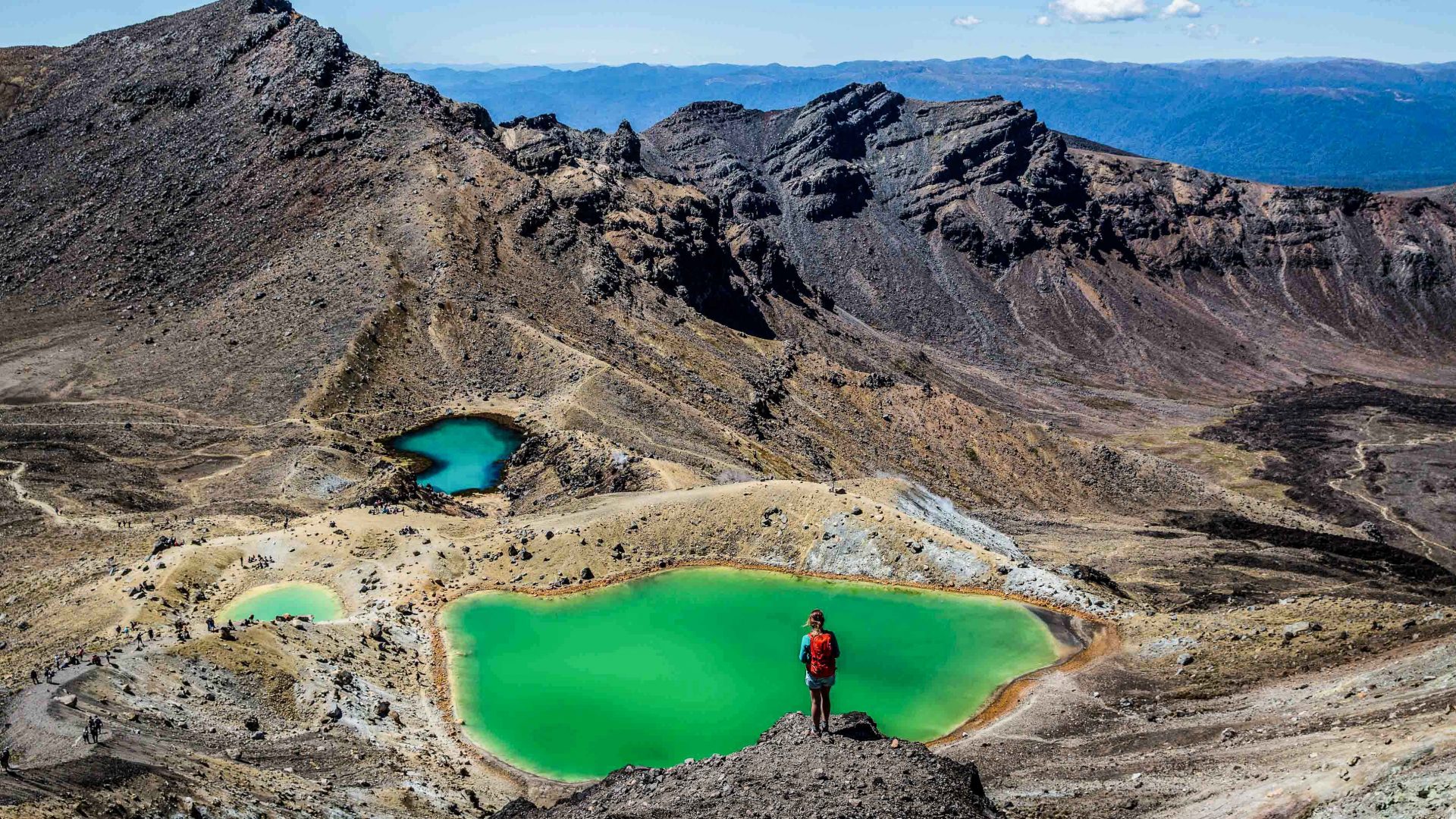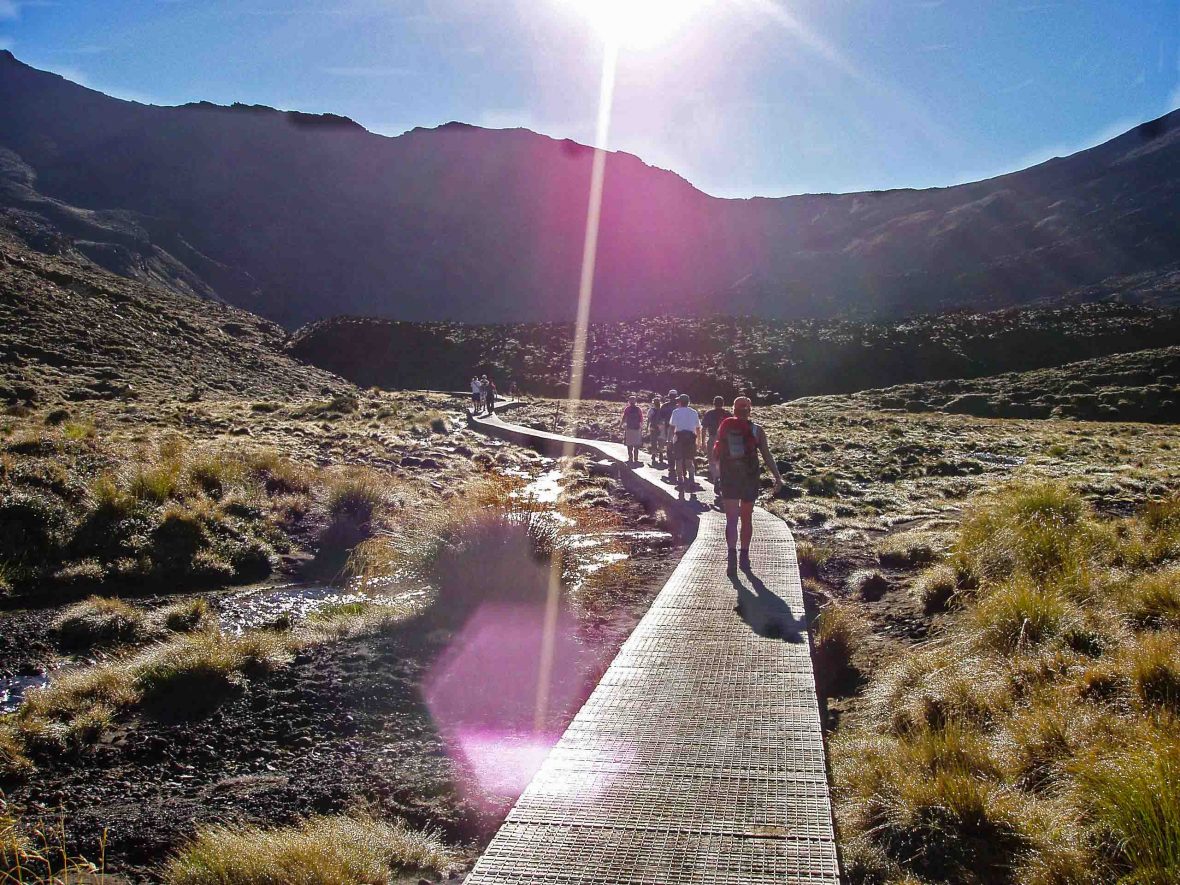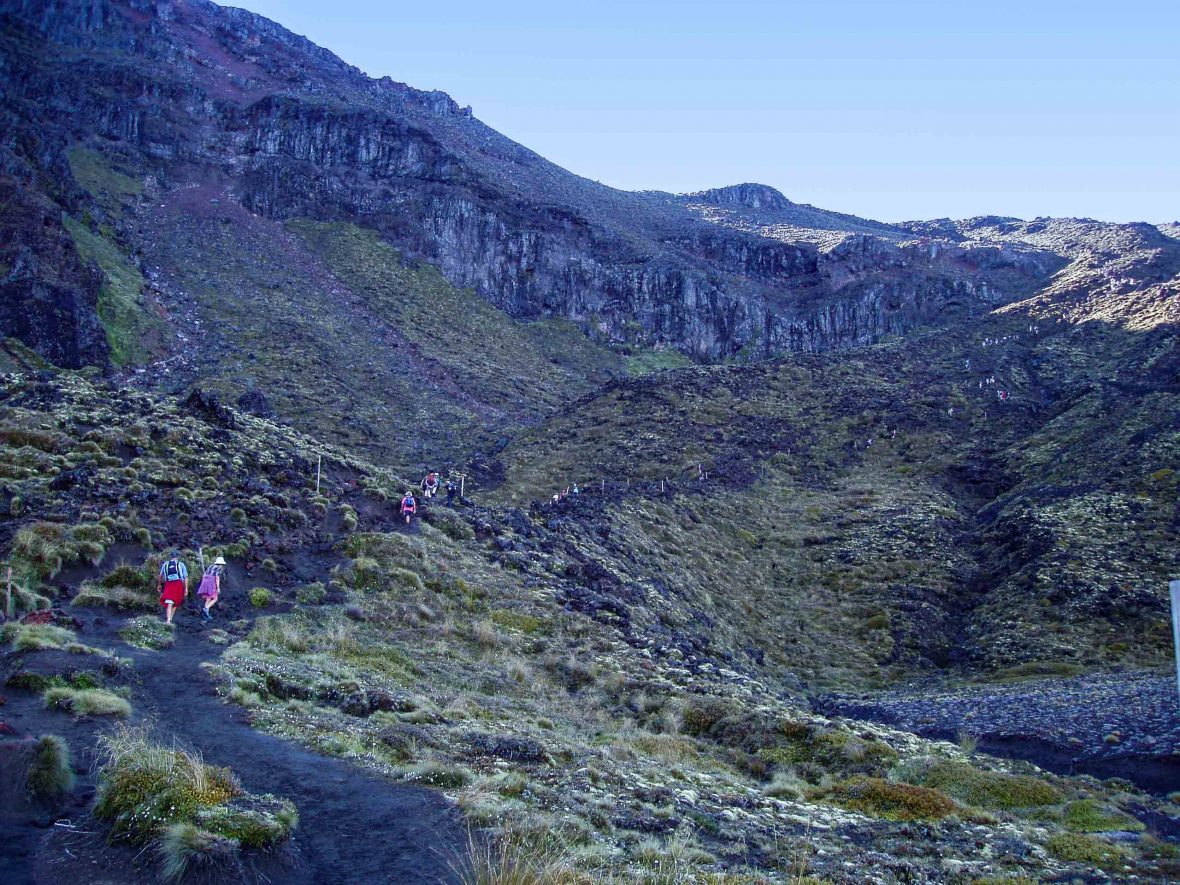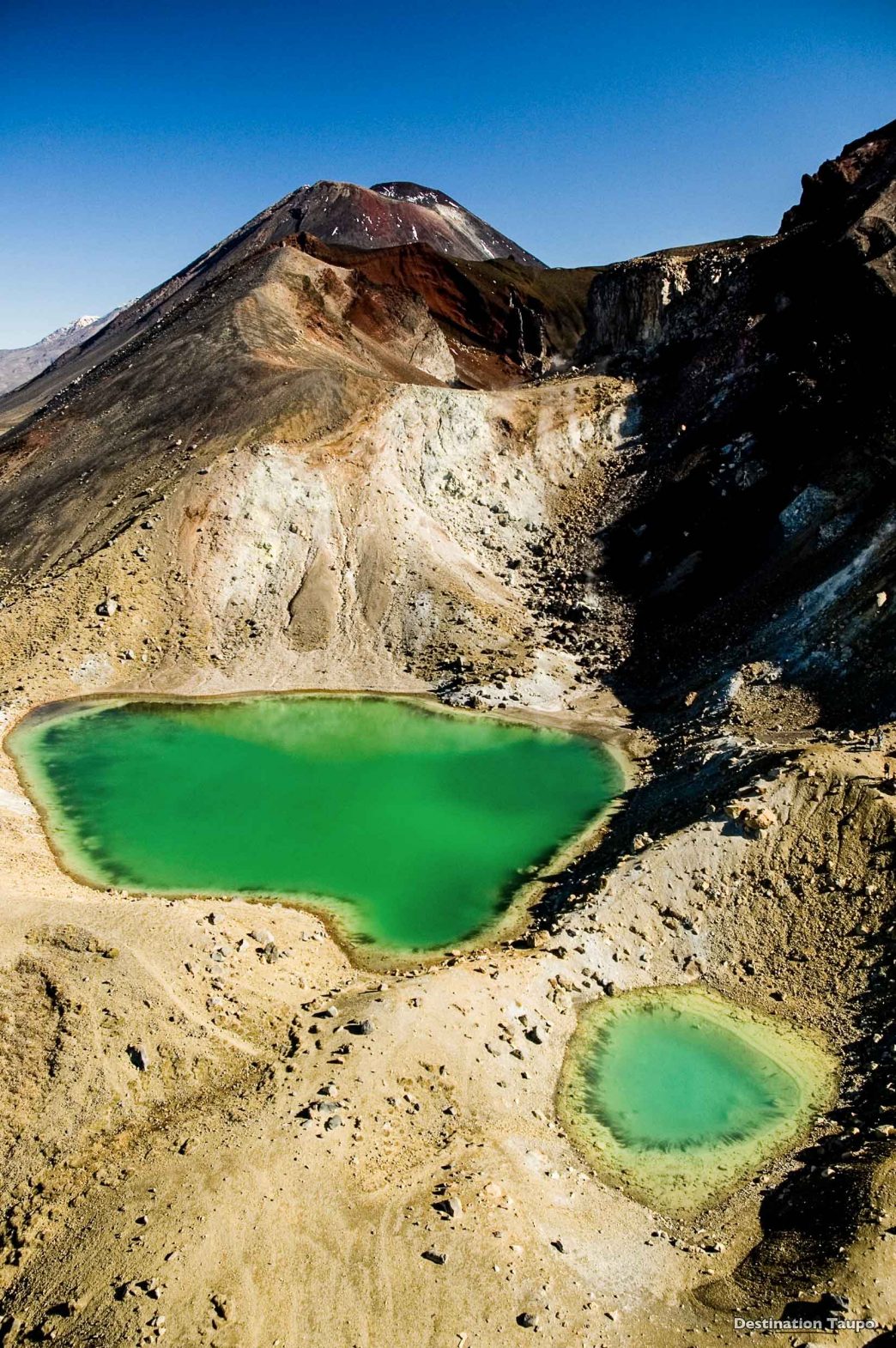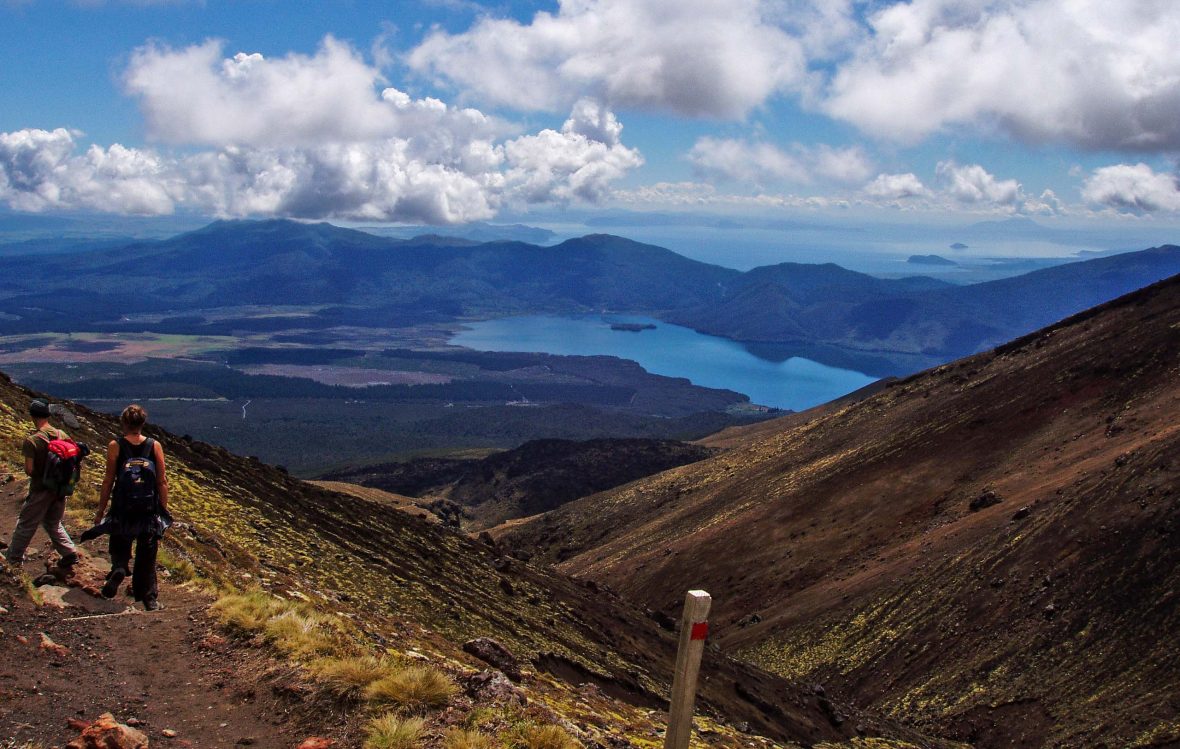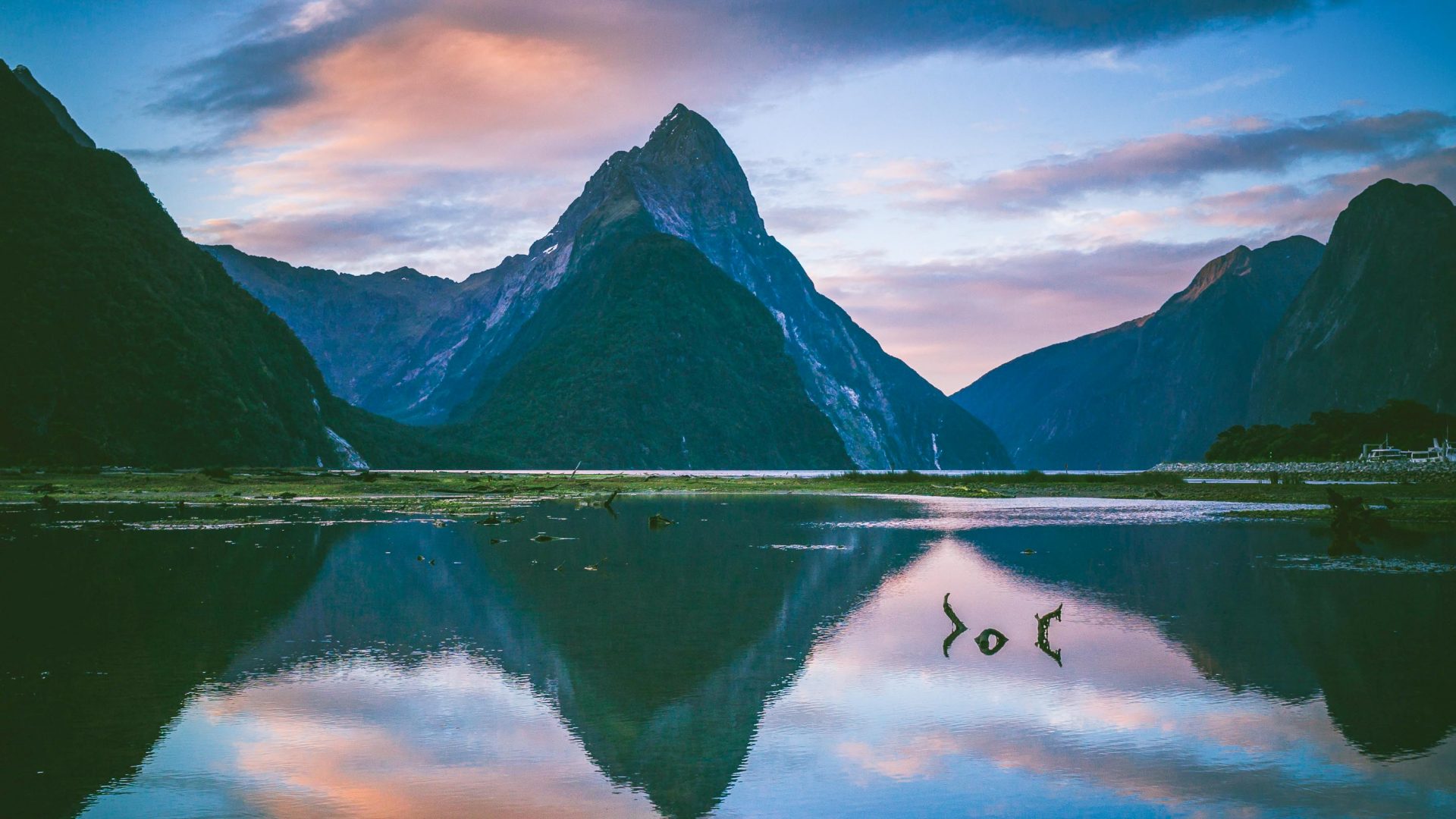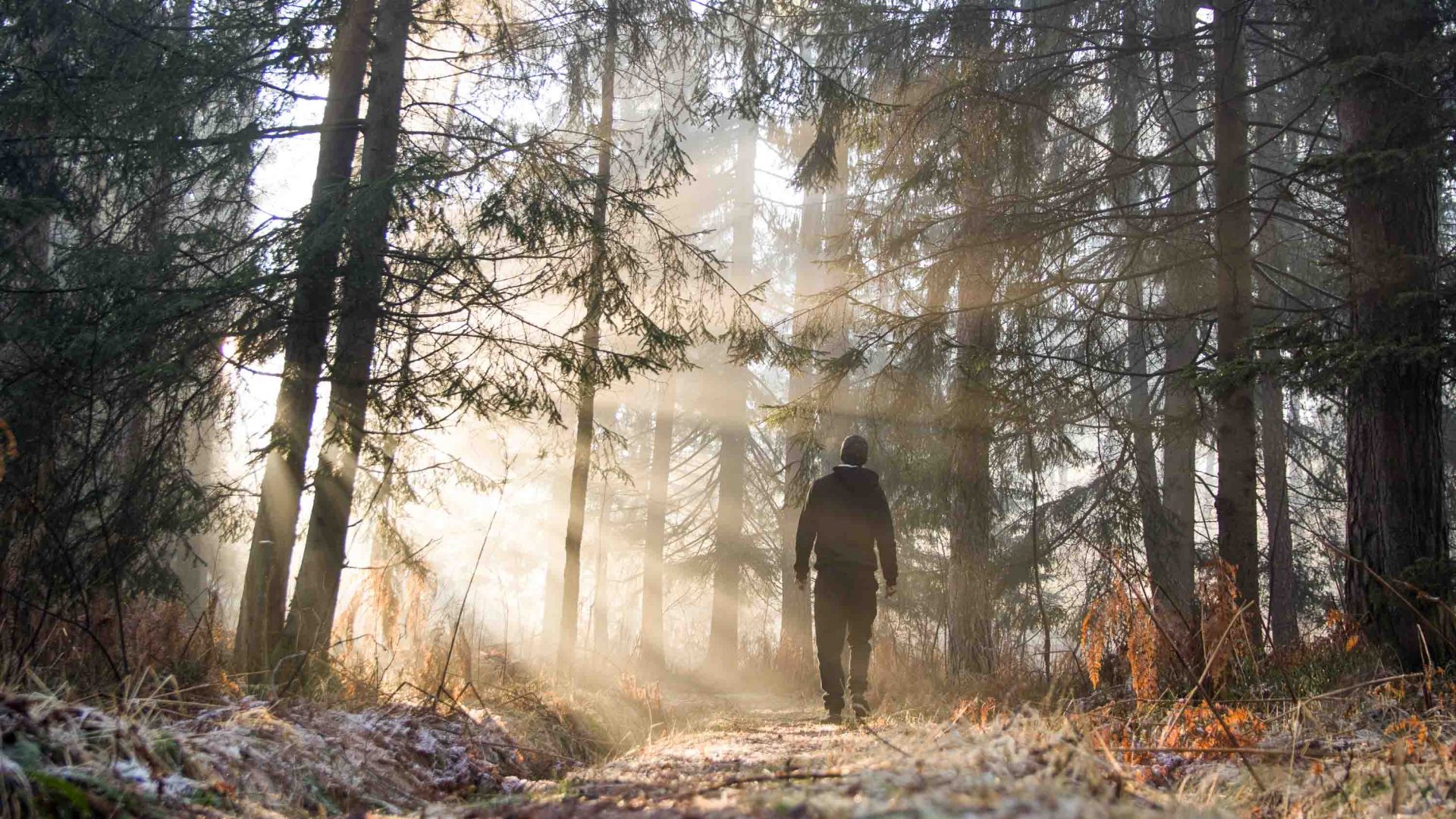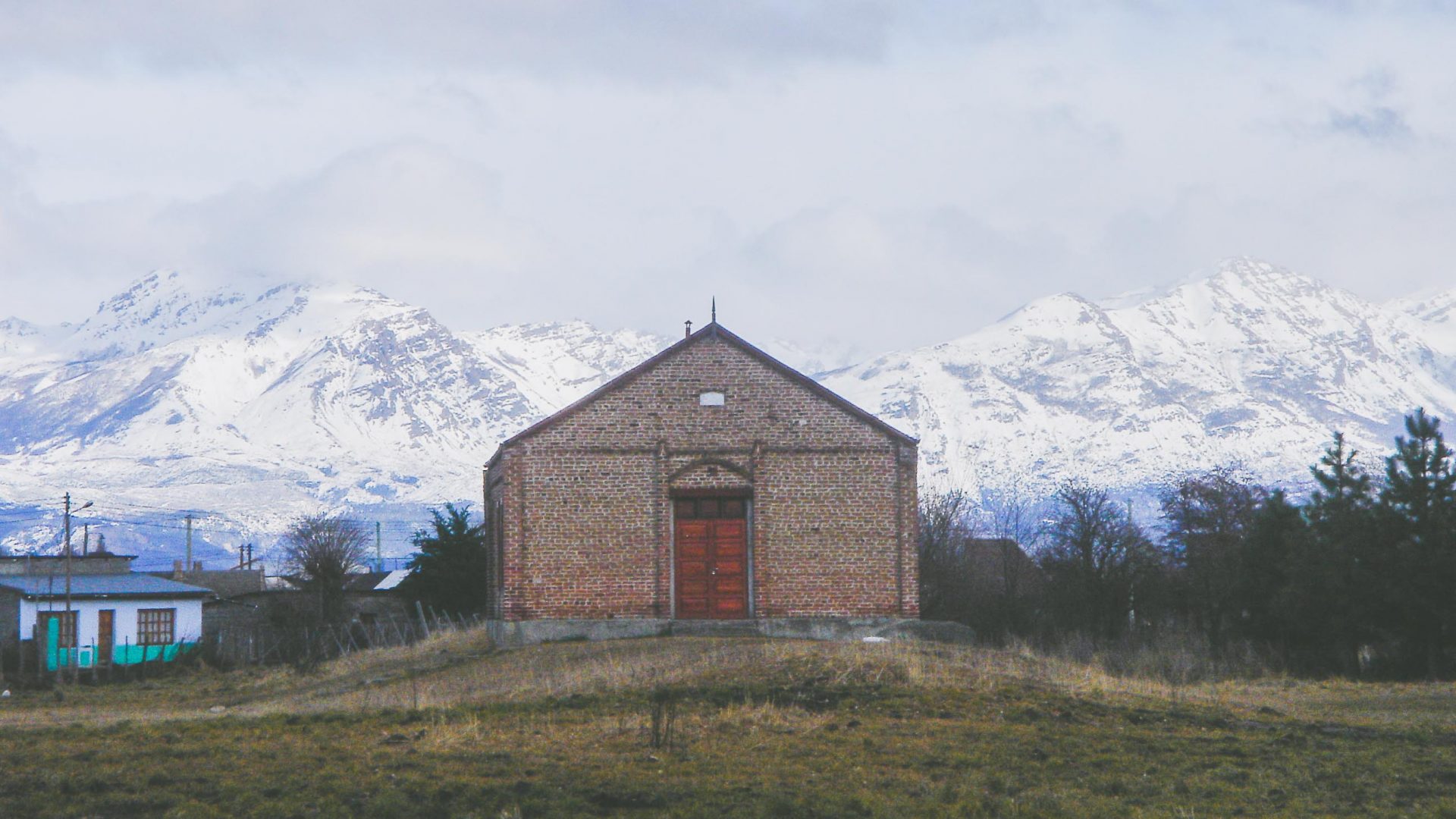Billed as one of New Zealand’s best day hikes, the Tongariro Alpine Crossing winds through a national park best known as Peter Jackson’s Mordor. Could you turn down a chance to follow in Frodo’s footsteps?
I can’t remember how I met tall, lanky Yorkshire Joe. Was he alongside me at the Lake Taupo stop before dawn, waiting for the transfer bus to Tongariro National Park? Did he sit next to me? Did we laugh together when Kiwi Mike, the bus guide, warned us irreverently to be “wary of the Ngauruhoe volcano ‘cos it’s an open anus with the smelliest farts in the Pacific”?
Whatever—without a word being exchanged, here we are, walkmates on the Tongariro Alpine Crossing. Billed as the best one-day hike in New Zealand, this 19-kilometer trail bisects the North Island’s central volcanic plateau reaching a summit of 1,886 meters.
It all starts deceptively flat at the Mangatepopo parking lot. A boardwalk leads us towards a blinding sun that confers a fiery copper glow to the tussock- and lichen-strewn field we’re traversing. By the time the sun has risen a few more degrees and we can make out the angle of the slope ahead, we’ve both woken up properly.
RELATED: Beyond Middle Earth: What’s New Zealand’s secret power?
Now we’re ready to tackle ‘The Devil’s Staircase,’ a steep, irregular incline of volcanic debris zigging and zagging to a top we cannot yet discern. The worts hugging the rocks are still wet with dew and every step is treacherous. I concentrate on Joe’s boots in front of me: He’s taking his time, like everyone else, to check his footing with each stride.
The sound of slipping pebbles makes everyone stop and look aside. Two guys in singlets and shorts are madly scrambling up the slope on all fours as if on the run from wild animals, notably missing in New Zealand. “They’re trying to beat the record,” Joe says. I recall Kiwi Mike’s words in the bus: “For the athletes among you,” he’d said, “the fastest time for the trail is 1 hour and 47 minutes.”
After traversing the South Crater, we face a second climb to the Red Crater—it may e shorter, but its far more tiring than the Devil’s Staircase. There the ground was firm and was hard on our bones, but this is like climbing on sand and it’s hard on our muscles.
Once on the rim of the Red Crater—no prizes for guessing its color—we follow a path so tight that it sometimes narrows down to six feet with steep drops either side. Even small gusts of wind make our balance tricky. Once again, I remember Kiwi Mike: “Do not, I repeat, do not fall down into the Red Crater. You’ll be trapped!” I look down at the abyss and shudder—would they helicopter us out?
According to Joe’s book of Maori lore, when priest Ngatoro first arrived here from the north, he decided to climb these mighty peaks with his slave girl Auruhoe. But once up, the weather turned, and a cold wind almost froze them both to near-death. Ngatoro prayed to the ancestral gods who sent the fire demons like a flash and the mountains erupted with fire to warm the priest back to life. The spirits demanded a sacrifice, so Ngatoru threw Auruhoe to the crater and named the mountain after her: Ngauruhoe.
We’re in Mordor, alright.
The sun is now behind us as we tread Tongariro’s eastern slopes. Sliding gravel turns to boggy soil with a cover of tussock, daisies and gentians. Why, even some pipits are chirping to celebrate our arrival. Like all New Zealand birds, they look at us unperturbed, with a gaze that says: “I used to be a dinosaur, you know.” And it is here, looking across all the way to Lake Taupo and the voluptuous curves of Mount Pihanga clad in a cloak of green foliage, that we sit down to have our baguettes (me) and energy bars (Joe).
RELATED: How tough can Britain’s toughest trail really be?
We’d both been psyched up for the ascent, but no one had warned us about the long, spiraling descent. It’s a full hour downhill until we reach the Ketetahi hut, where a ranger counts us all out—glad, I presume, not to have to summon a helicopter today—and then another anticlimactic hour-and-a-half through a podocarp forest starring ancient totara and manuka trees. Fantails—a native bird—flit by as we pass through their territory, waiting for us to disturb insects as we plod along.
